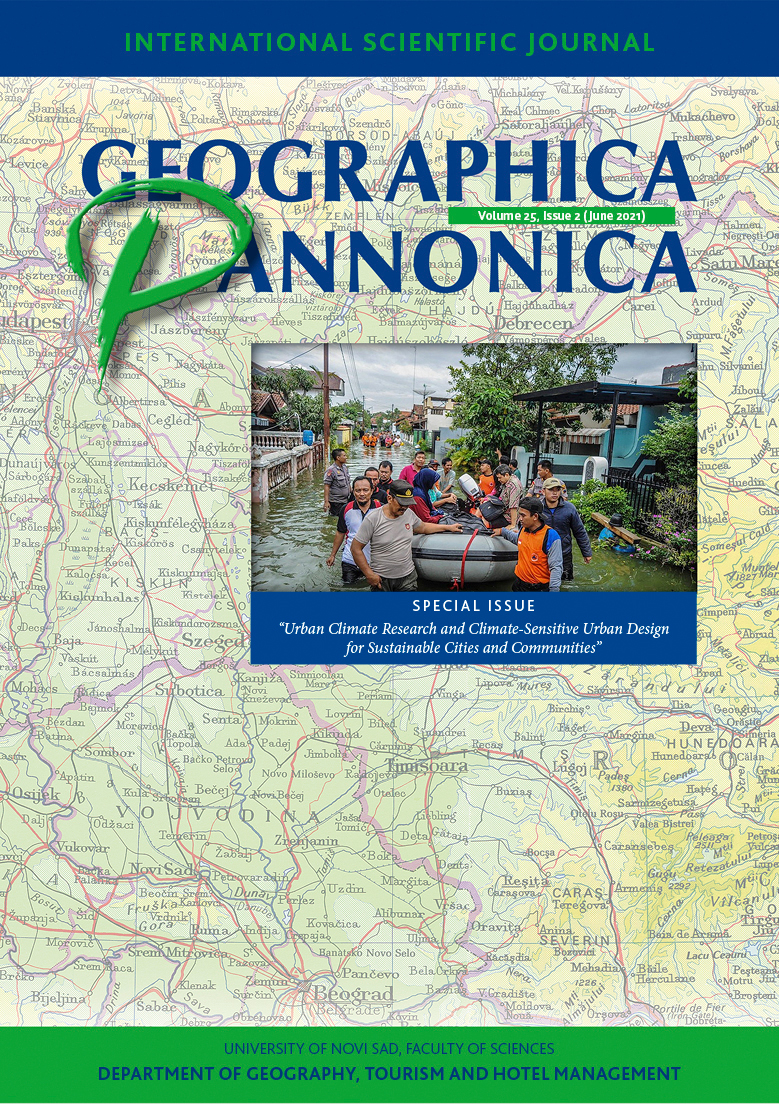Measuring Neighbourhood Hardships and NeighbourhoodChange between 2010-2015 in Suburban Neighbourhoods of Buffalo Metropolitan Area, New York
Abstract
Neighbourhoodsin urban and suburban areasexperienced changes in terms of physical, social, economic, and demographics. Neighbourhood Hardship Index (NHI) had been used to measure neighbourhood socio-economic condition, using various census variables. Suburban neighbourhoodswhich underwent a change lead to stratification into striving outersuburbs and declining innersuburbs. The context of this study was suburban neighbourhoods in Buffalo Metropolitan Area (BMA), New York. This paper aimed at highlighting spatial variability of neighbourhood change in inner- and outer-suburban neighbourhoods of BMA between 2010-2015. This study examined factors that significantly contribute to neighbourhood change. Also, this study examined whether there a difference in the change of neighbourhood hardship index between inner- and outer-suburban neighbourhoods. Composite NHI was developed from economic, demographic, and housing variables. Neighbourhood change was measured by comparing the composite NHI 2010 with that of 2015. The findings depicted a variation of change in hardships index across suburban neighbourhoods. Neighbourhoods with higher hardship index were primarily located in innersuburbs. Policy implications call for concerted efforts to tackle the decline in the economy, education, demography to promote equity across neighbourhoods in suburban areas.
References
Airgood-Obrycki, W., Hanlon, B., & Rieger, S. (2020). Delineate the U.S. suburb: An examination of how different definitions of the suburbs matter. Journal of Urban Affairs, 1-22. doi: 10.1080/07352166.2020.1727294
Berube, A., Katz, B., & Lang, R. E. (Eds.). (2005). Redefining Urban and Suburban America: Evidence from Census 2000 (Vol. 2). Washington D.C.: The Brookings Institution.
Hanlon, B., Vicino, T. J., & Short, J. R. (2006). The New Metropolitan Reality in the US: Rethinking the Traditional Model. Urban Studies, 43(12), 2129–2143.
Hanlon, B., & Vicino, T. J. (2007). The Fate of Inner Suburbs: Evidence From Metropolitan Baltimore. Urban Geography, 28(3), 249-275. doi: 10.2747/0272-3638.28.3.249
Hanlon, B. (2008). The Decline of Older, Inner Suburbs in Metropolitan America. Housing Policy Debate, 19(3), 423-455.
Hanlon, B. (2010). Once the American Dream: Inner-Ring Suburbs of the Metropolitan United States. Philadelphia: Temple University Press.
Hanlon, B., Short, J. R., & Vicino, T. J. (2010). Cities and Suburbs: New Metropolitan Realities in the U.S. New York: Routledge: Taylor and Francis Group.
Hanlon, B., & Vicino, T. J. (2019). The Routledge Companion to the Suburbs (B. Hanlon & T. J. Vicino Eds.). New York: Routledge.
Saleh, I. (2019). Suburban Neighborhood Change and Its Manifestation in the Disparities in Neighborhood Hardship, Educational Opportunity, and School Performance between 2010 and 2015 in the Buffalo Metropolitan Area. (Doctoral Dissertation), The State University of New York at Buffalo, Buffalo, New York.
Lucy, W. H., & Phillips, D. L. (1997). The Post-suburban Era Comes to Richmond: City Decline, Suburban Transition, and Exurban Growth. Landscape and Urban Planning, 36, 259-275.
Lucy, W. H., & Phillips, D. L. (2000a). Confronting Suburban Decline: Strategic Planning for Metropolitan Renewal. Washington D.C.: Island Press.
Lucy, W. H., & Phillips, D. L. (2000b). Suburban Decline: The Next Urban Crisis. Issues in Science and Technology, 17(1), 55-62.
Lucy, W. H., & Phillips, D. L. (2001) Suburbs and the Census: Patterns of Growth and Decline. Center on Urban & Metropolitan Policy: Brookings Institution.
Lucy, W., & Phillips, D. L. (2003). Suburbs: Patterns of Growth and Decline. In A. Berube, B. Katz, & R. Lang (Eds.), Redefining Urban and Suburban America: Evidence from Census 2000 (Vol. 1). Washington D.C.: Brookings Institution Press.
Lucy, W. H., & Phillips, D. L. (2006). Tomorrow's Cities, Tomorrow's Suburbs. Chicago: American Planning Association.
Mikelbank, B. A. (2006). Local Growth Suburbs: Investigating Change within the Metropolitan Context. Opolis, 2(1), 1-15.
Orfield, M. (1997). Metropolitics: A Regional Agenda for Community and Stability. Washington D.C.: Brookings Institution.
Orfield, M. (2002). American Metropolitics: The New Suburban Reality. Washington D.C.: Brookings Institution Press.
Owens, A. (2012). Neighborhoods on the Rise: A Typology of Neighborhoods Experiencing Socioeconomic Ascent City & Community, 11 (4), 345-369
Saleh, I. (2020). Neighborhoods Drifting Apart: Suburban Neighborhood Stratification and Its Impact on Spatial Inequity of Access to quality Schools in Suburban Neighhborhoods of Buffalo Metropolitan Area, New York. Paper presented at the International Seminar of Research for Social Justice, Bandung.
Short, J. R., Hanlon, B., & Vicino, T. J. (2007). The Decline of Inner Suburbs: The New Suburban Gothic in the United States. Geography Compass, 1(3), 641-656.
Tzaninis, Y., & Boterman, W. (2018). Beyond the urban–suburban dichotomy. City, 22(1), 43-62. doi: 10.1080/13604813.2018.1432143

